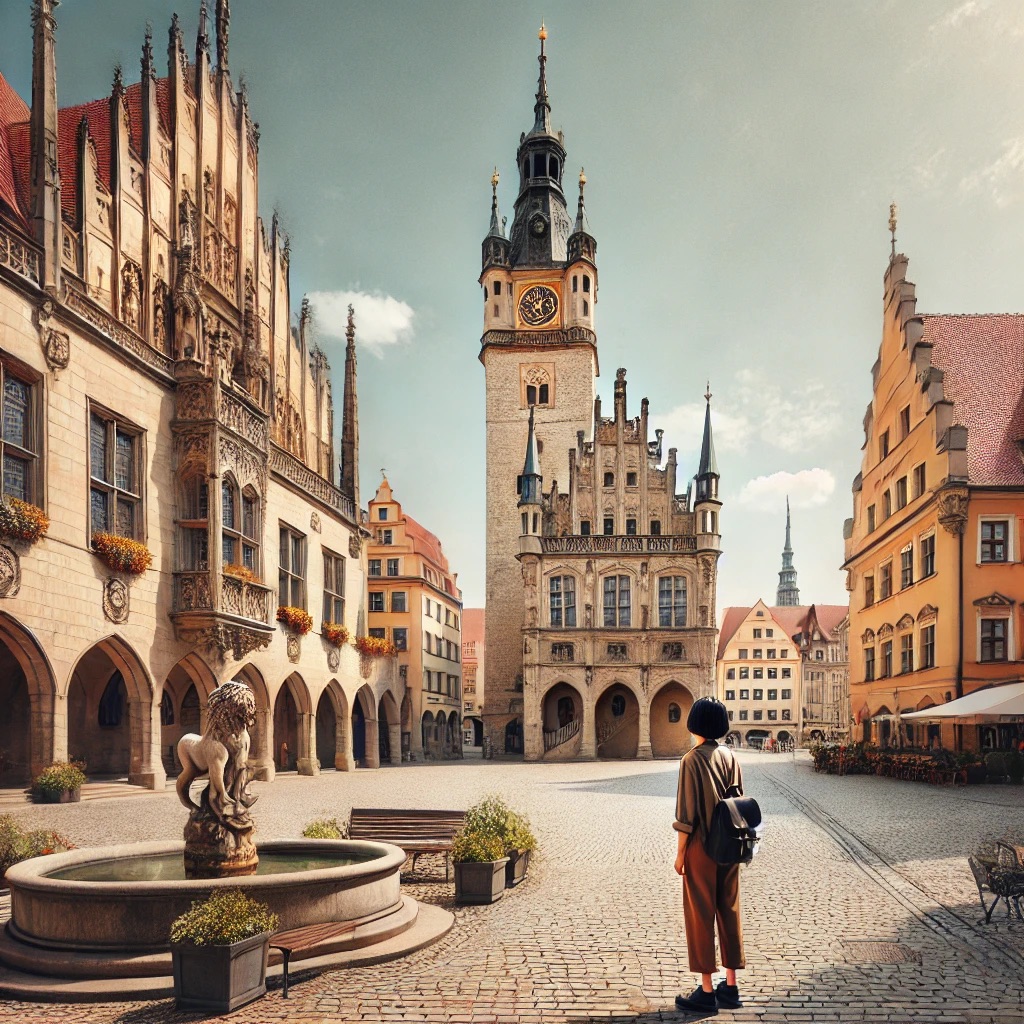ChatGPT:
Bergamo is a historic city in northern Italy, located in the Lombardy region. It is known for its stunning medieval architecture, rich cultural heritage, and its division into two distinct areas: Città Alta (Upper Town) and Città Bassa (Lower Town).
Città Alta is the walled, medieval part of the city, perched on a hill and filled with narrow cobblestone streets, Renaissance palaces, and historic landmarks. The Venetian walls, now a UNESCO World Heritage site, offer panoramic views of the surrounding countryside. Notable landmarks include Piazza Vecchia, the Basilica di Santa Maria Maggiore, and the Colleoni Chapel, all showcasing the city’s rich artistic legacy.
Città Bassa, on the other hand, is more modern and bustling, with wide streets, shopping areas, and vibrant cultural spots like the Accademia Carrara, a renowned art gallery. The lower part of the city is well-connected to Milan and serves as a commercial hub.
Bergamo also boasts a rich food scene, known for traditional Lombard dishes such as polenta and casoncelli (a local stuffed pasta). It’s a city that blends the charm of its medieval past with the energy of its modern present, making it a captivating destination.
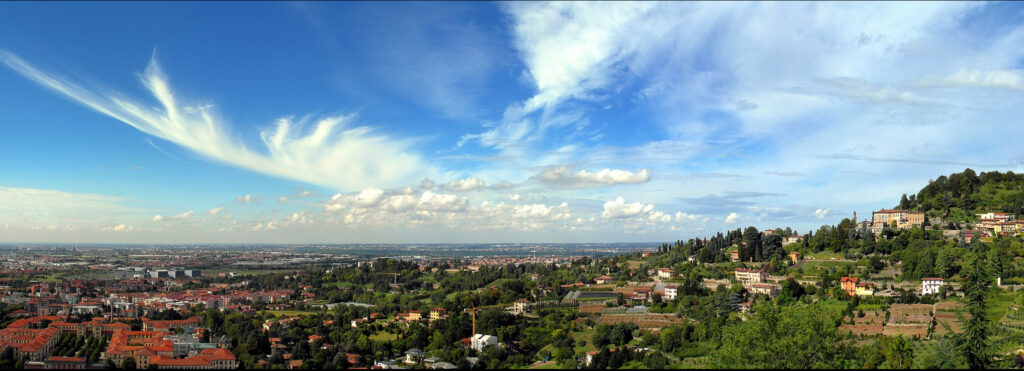
Bergamo’s history stretches back over two millennia, with its origins rooted in ancient times and its development shaped by a succession of rulers, cultures, and strategic importance.
Ancient Origins
Bergamo was founded by a Celtic tribe known as the Cenomani around the 6th century BC. The area’s strategic position on a hill made it a natural settlement point. By 49 BC, Bergamo became a Roman municipium and was integrated into the Roman Empire. The city’s Latin name, Bergomum, was used during this period. As a Roman town, it was a modest but important settlement, located along the Via Gallica, a Roman road connecting the city to the rest of northern Italy.
Medieval Period
Following the collapse of the Roman Empire, Bergamo, like much of northern Italy, underwent a series of invasions and shifts in control. In the 5th century, it was sacked by the Ostrogoths, and later, in the 6th century, it became part of the Lombard Kingdom. The Lombards gave the city an important role, and under their rule, it became a significant duchy. By the 8th century, it fell under the control of Charlemagne and the Carolingian Empire.
During the Middle Ages, Bergamo thrived as a free commune, with a degree of autonomy from feudal lords. However, it was constantly embroiled in struggles between local families, particularly the Guelphs and Ghibellines. It was during this period that many of the structures of Città Alta were built, establishing Bergamo’s medieval character.
Venetian Rule (15th–18th Century)
One of the most significant chapters in Bergamo’s history began in 1428 when the city came under the rule of the Republic of Venice. Venetian control lasted for more than 350 years, and during this time, Bergamo flourished economically and culturally. The Venetians fortified the city, building the imposing Venetian walls (which still stand today and have been designated a UNESCO World Heritage site).
While Bergamo enjoyed prosperity under Venetian rule, it also served as a defensive outpost against the Duchy of Milan, situated nearby. The Venetian influence is particularly evident in the architecture of Città Alta, with its Renaissance palaces and buildings reflecting the wealth and status of the era.
Napoleonic and Austrian Rule
In 1797, the city’s Venetian era came to an end with the arrival of Napoleon and the creation of the Cisalpine Republic. Bergamo briefly became part of the French-controlled republic, but after Napoleon’s fall, the city was incorporated into the Austrian-controlled Kingdom of Lombardy-Venetia in 1815, under the terms of the Congress of Vienna.
This period of Austrian rule was marked by growing unrest and the rise of Italian nationalism, which sought to unify the various Italian states. Bergamo played a role in the movement for Italian unification, with its citizens supporting Garibaldi and his efforts to liberate Italy.
Unification and Modern Era
In 1859, Bergamo was incorporated into the Kingdom of Italy, following the Second Italian War of Independence. The city embraced its new role in a unified Italy and gradually began to modernize. During the 19th and 20th centuries, Bergamo’s Città Bassa (Lower Town) expanded rapidly, evolving into a vibrant economic and cultural center, while Città Alta retained its historic charm.
The city also played a part in both World Wars. During World War I, many soldiers from Bergamo fought in the Italian Army, while in World War II, the city experienced German occupation and witnessed significant resistance activities.
Development in the 20th and 21st Century
In the post-war era, Bergamo experienced significant economic growth, becoming a center for industry and commerce, especially in textiles, engineering, and manufacturing. Modern transportation infrastructure, including the Orio al Serio International Airport, made the city more accessible and boosted its role as an economic hub.
At the same time, Bergamo retained its historic character, with efforts to preserve the architectural and cultural heritage of Città Alta. The city’s blend of ancient, medieval, and modern elements has made it a popular destination for tourists, while its economy continues to benefit from its strategic location in northern Italy.
Today, Bergamo is a thriving city that embraces its rich history while continuing to develop as a center of culture, art, and industry.
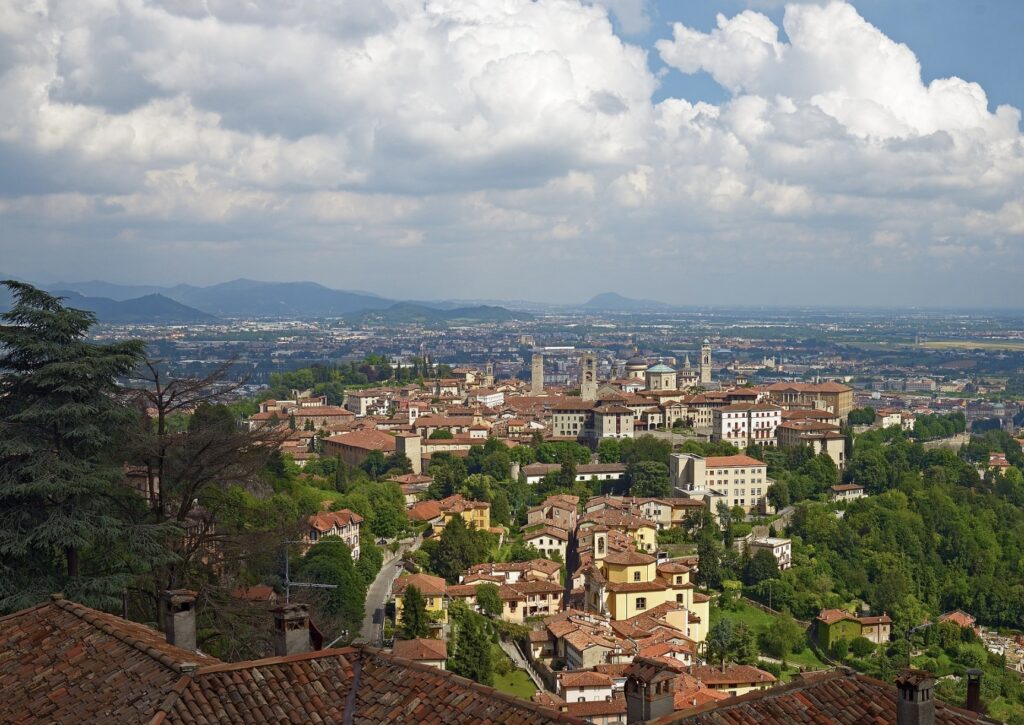
Bergamo is rich in historical monuments and tourist attractions, particularly within its walled upper city (Città Alta) and its modern lower city (Città Bassa). Here are some of the key landmarks and attractions:
Città Alta (Upper Town)
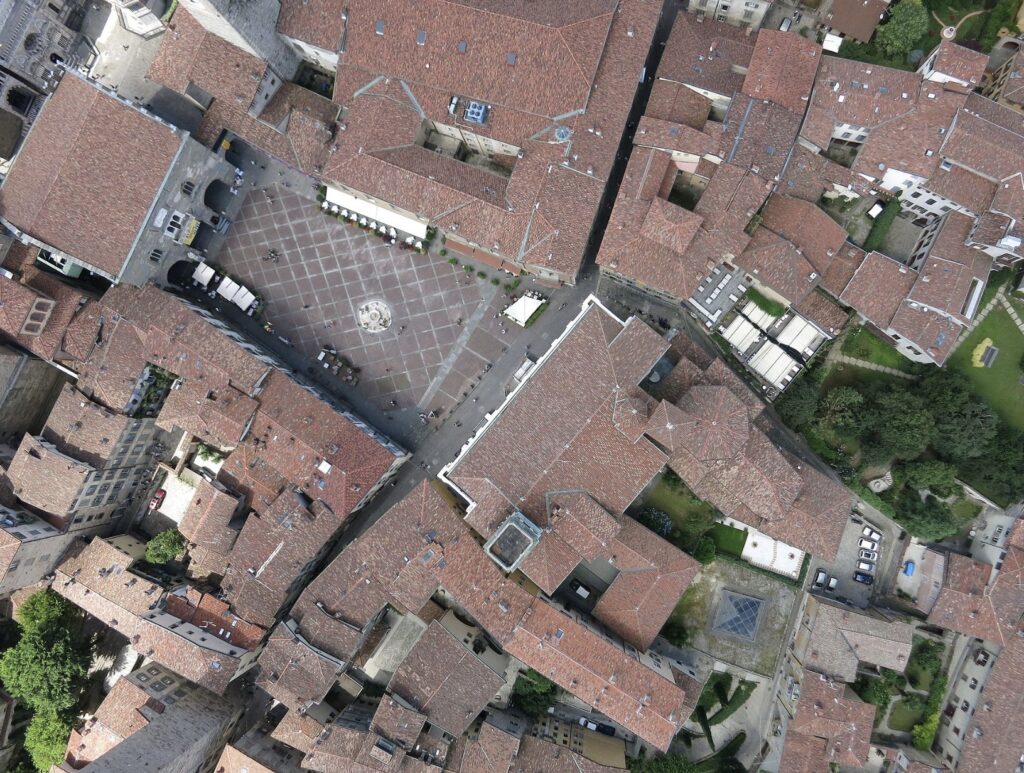
- Piazza Vecchia: The heart of Città Alta, this beautiful square is surrounded by historic buildings such as the Palazzo della Ragione and the Torre del Campanone.
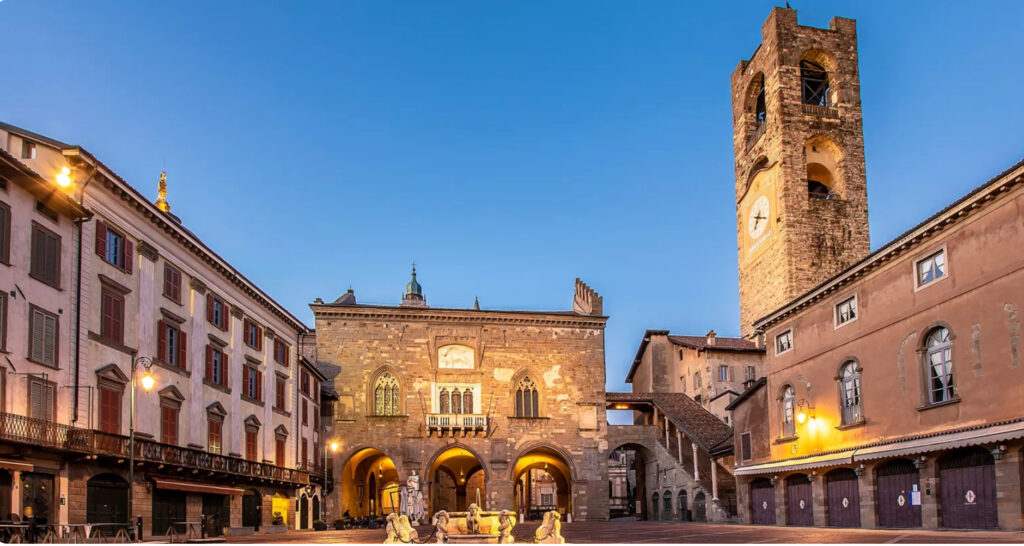
- Palazzo della Ragione: A medieval town hall with a beautiful loggia and an impressive history dating back to the 12th century.
- Torre del Campanone: The civic tower offering stunning panoramic views of Bergamo from the top.
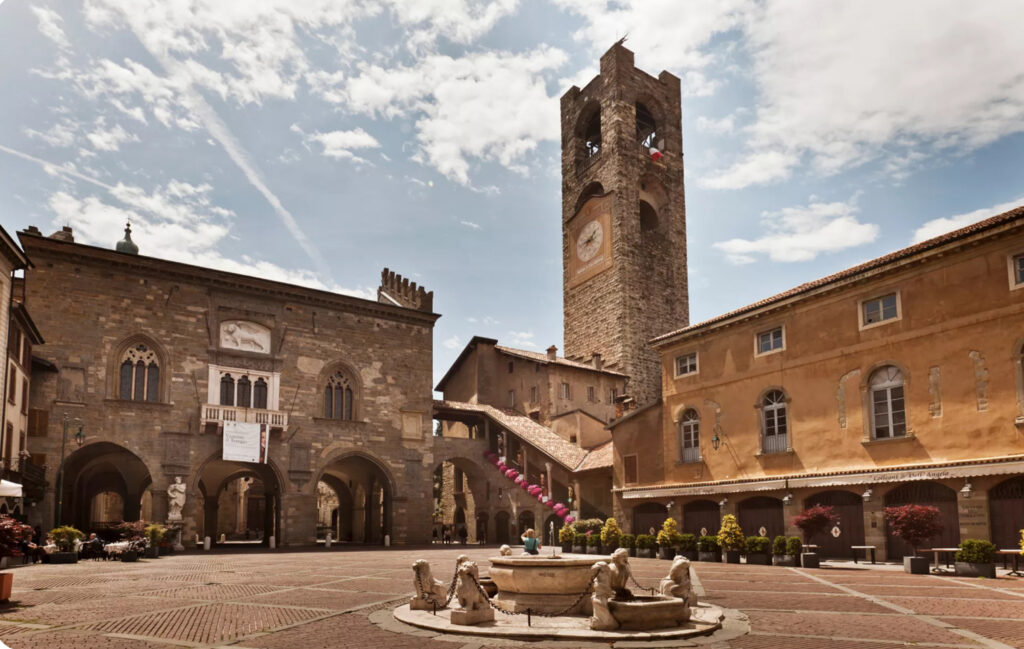
- Basilica di Santa Maria Maggiore: A Romanesque church from the 12th century, renowned for its beautiful Baroque interior, intricate frescoes, and grand tapestries. It’s one of Bergamo’s most important religious landmarks.
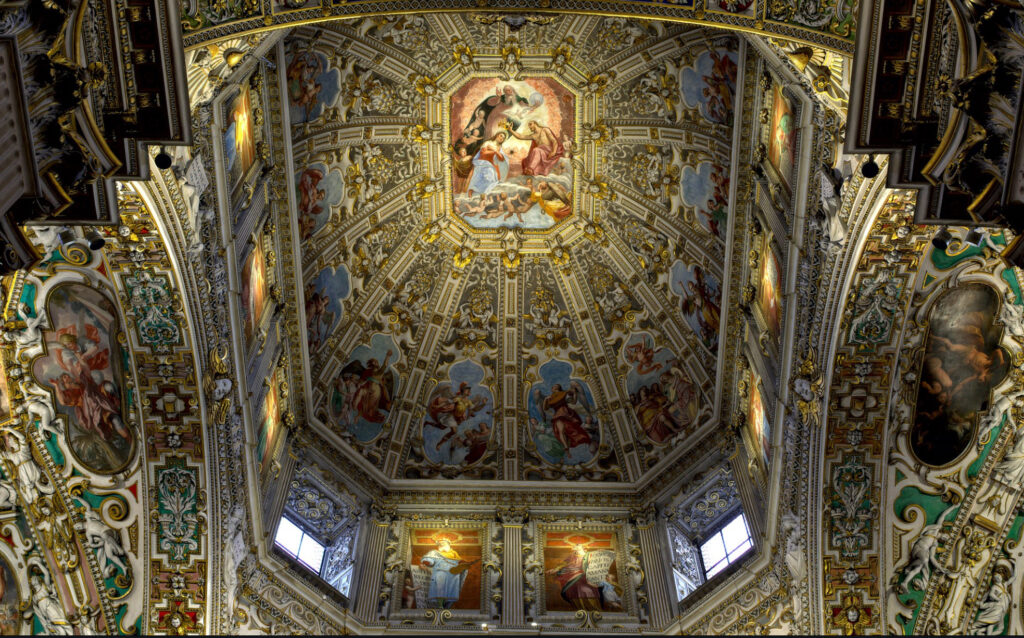
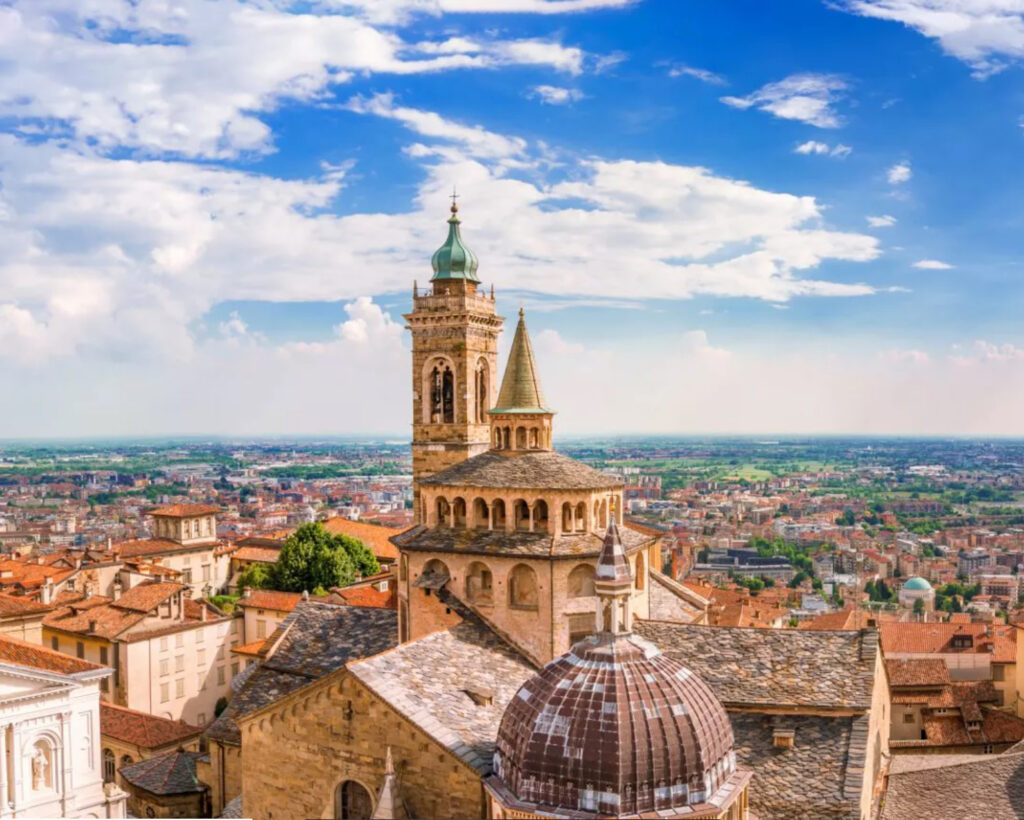
- Cappella Colleoni: Adjacent to the Basilica, this Renaissance chapel was built as the tomb of the condottiero Bartolomeo Colleoni. Its richly decorated facade and interior are exceptional examples of Lombard Renaissance art.
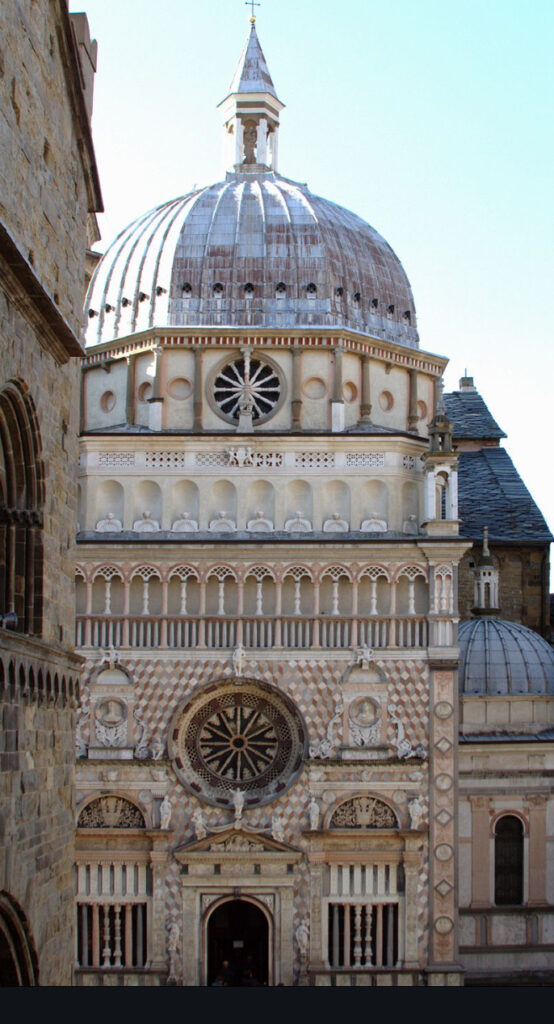
- Baptistery: An elegant octagonal structure near the Basilica, originally built in the 14th century, used for baptisms.
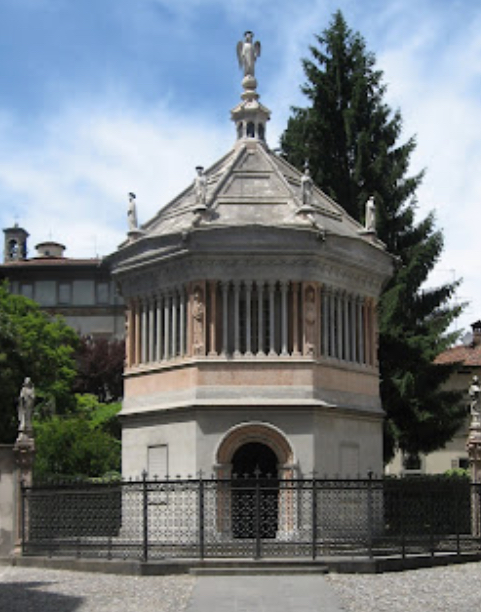
- Rocca di Bergamo: A fortress from the 14th century, built on the hill of Città Alta. It offers panoramic views of the city and houses a museum detailing Bergamo’s history.
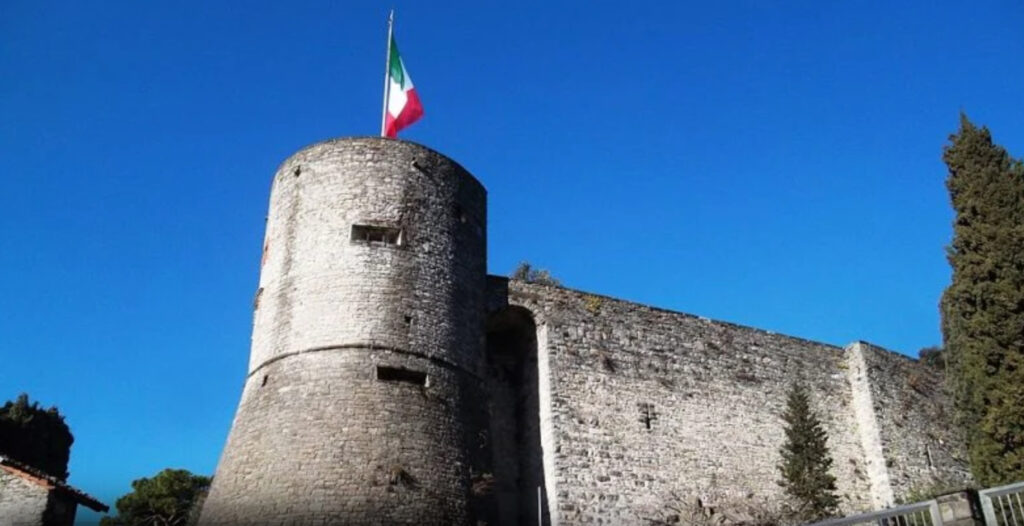
- Venetian Walls: The impressive 16th-century walls, built by the Republic of Venice, surround Città Alta and are now a UNESCO World Heritage site. Visitors can walk along parts of the walls for great views of the city and the surrounding landscape.
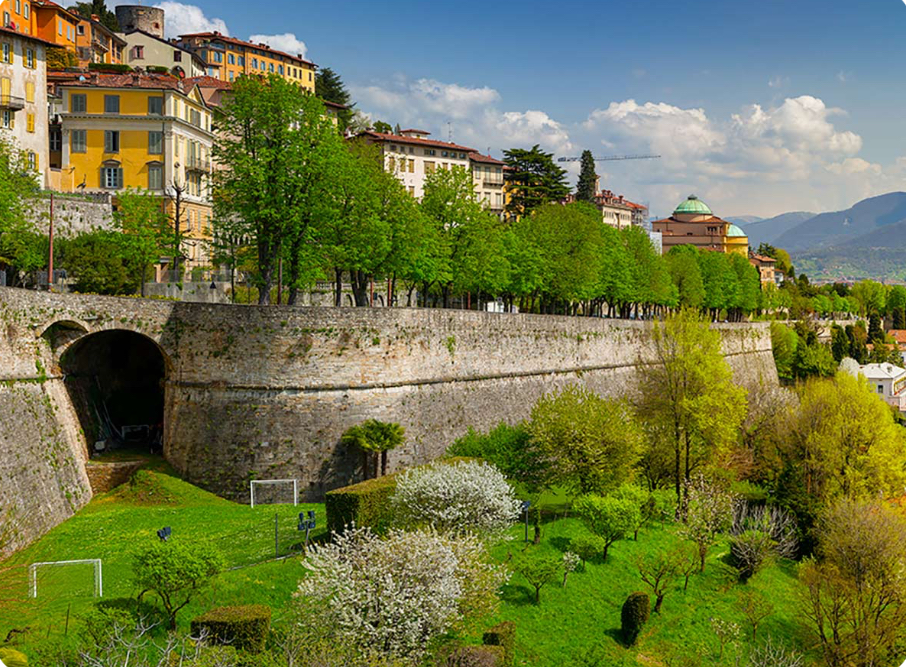
- Cittadella: A fortified area built by the Visconti family in the 14th century, now home to museums, such as the Archaeological Museum and the Museum of Natural Sciences.
- San Vigilio Castle: Perched above Città Alta on San Vigilio Hill, this medieval castle offers fantastic views over the city and the surrounding valleys.
Città Bassa (Lower Town)
- Accademia Carrara: One of Italy’s most prestigious art galleries, the Accademia Carrara houses an extensive collection of Renaissance and Baroque paintings by masters such as Botticelli, Raphael, and Titian.
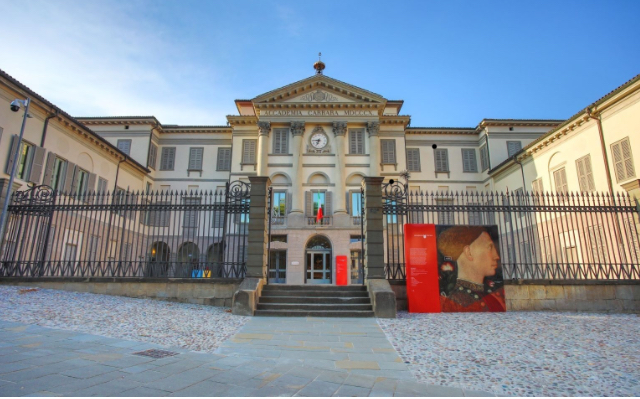
- Teatro Donizetti: Named after the famous composer Gaetano Donizetti, who was born in Bergamo, this historic opera house is a center for cultural events and performances.
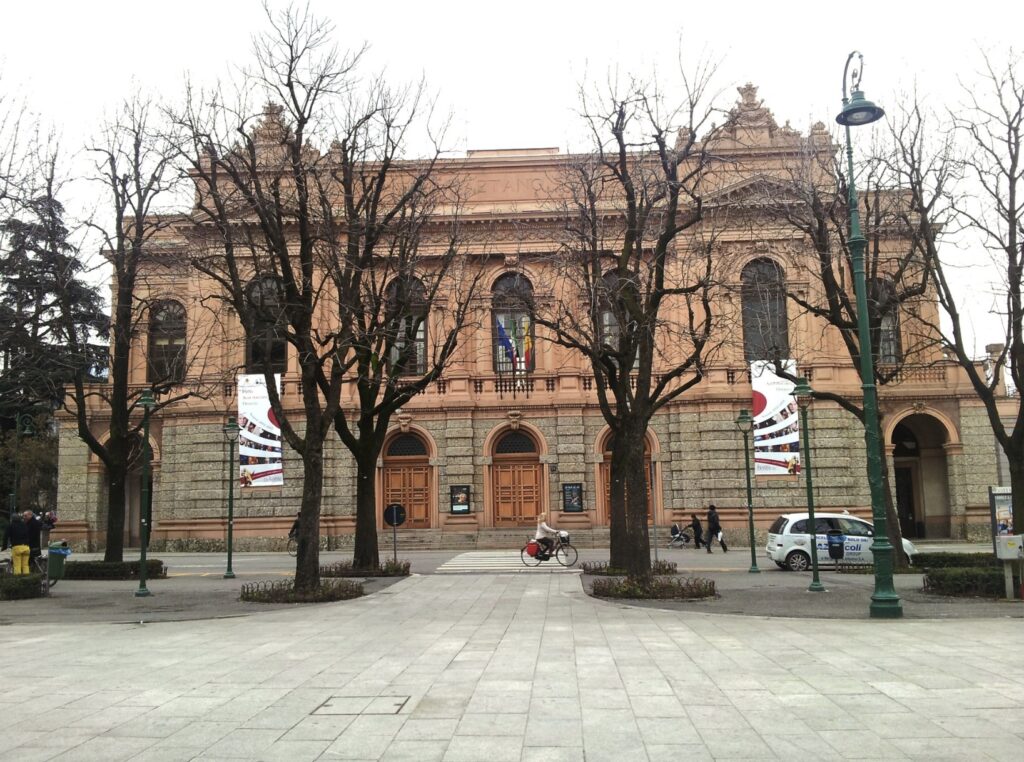
- Piazza Dante and Torre dei Caduti: The modern heart of Città Bassa, Piazza Dante is a lively square, and the Torre dei Caduti is a war memorial dedicated to those who died in World War I.
- Sentierone: A wide, tree-lined boulevard in Città Bassa, where locals enjoy an evening stroll. It’s also home to many shops, cafes, and restaurants.
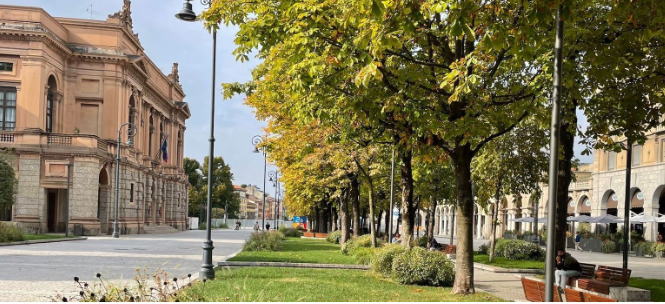
Museums
- Museo di Scienze Naturali Enrico Caffi: Located in Città Alta, this natural history museum offers exhibits on local wildlife, fossils, and minerals.
- Museo Archeologico di Bergamo: Also in Città Alta, this museum showcases archaeological artifacts from Bergamo’s ancient past, including Roman and Lombard objects.
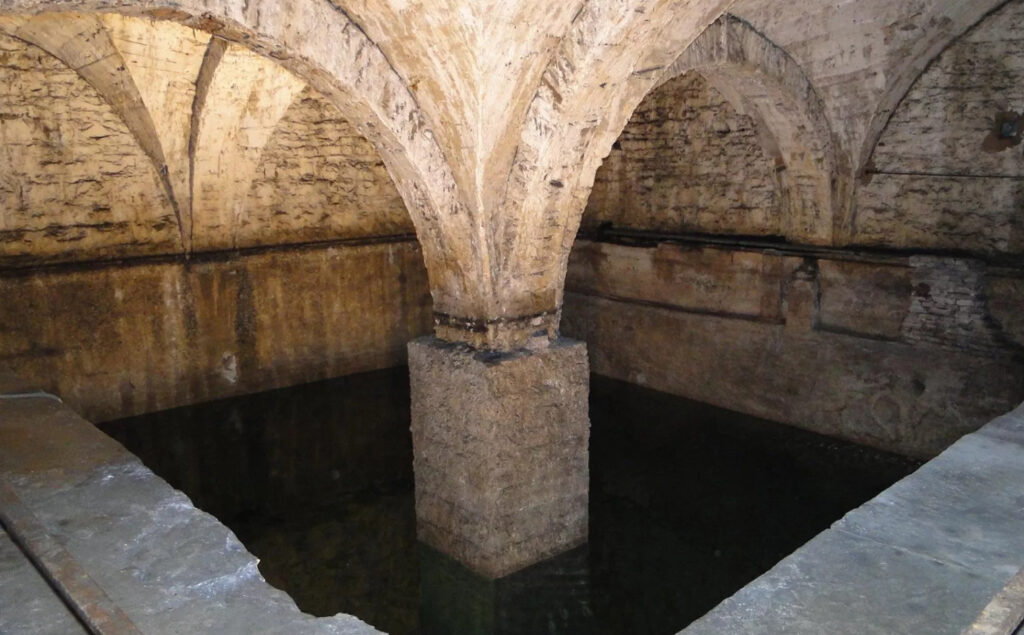
Religious Sites
- Sant’Agostino Church: A beautiful Gothic church located near one of the gates to Città Alta, now part of the University of Bergamo.
- Chiesa di San Michele al Pozzo Bianco: A small Romanesque church with significant medieval frescoes depicting the life of Christ.
Parks and Scenic Views
- Parco dei Colli: A large regional park surrounding Bergamo, filled with hiking trails, woodlands, and views over the city and countryside.
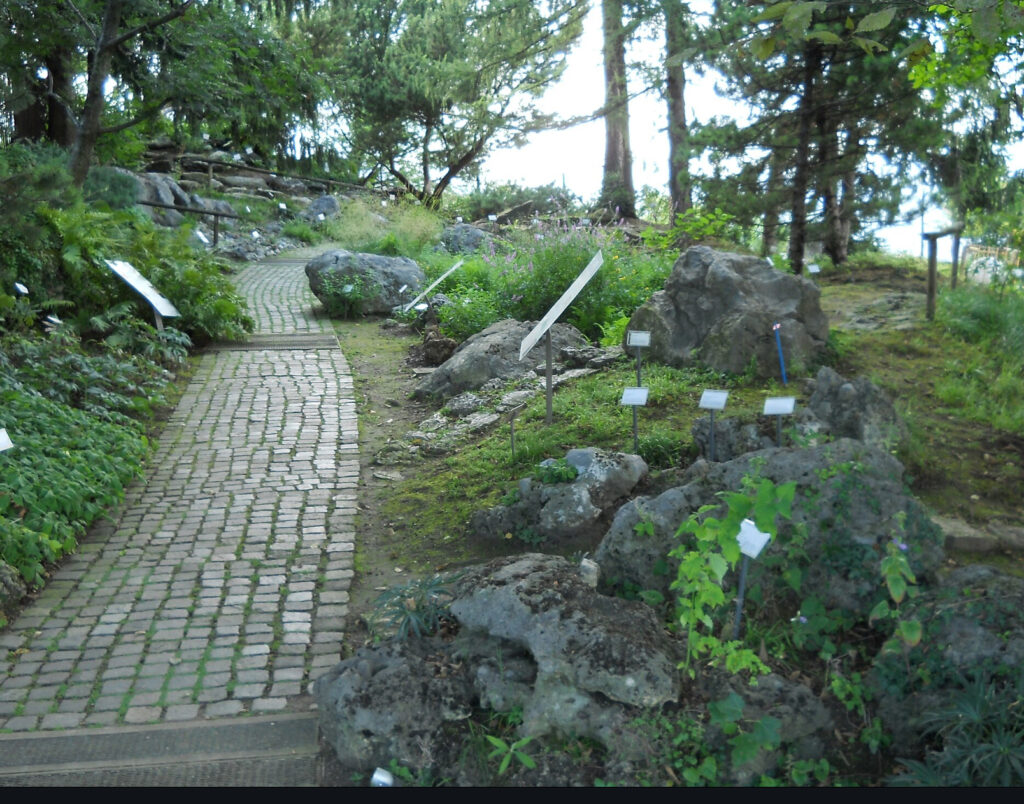
- Botanical Garden (Orto Botanico di Bergamo “Lorenzo Rota”): A peaceful garden located in Città Alta, showcasing native plant species and offering serene city views.
- Funicolare di Bergamo: Two funicular railways connect Città Bassa with Città Alta and Città Alta with San Vigilio Hill, providing both convenient transport and scenic rides.
Other Points of Interest
- Gaetano Donizetti’s Birthplace: A museum dedicated to the life and works of the famous composer, located in the house where he was born in Città Alta.
These attractions together make Bergamo a city that blends its rich history, art, and architecture with a lively modern culture.
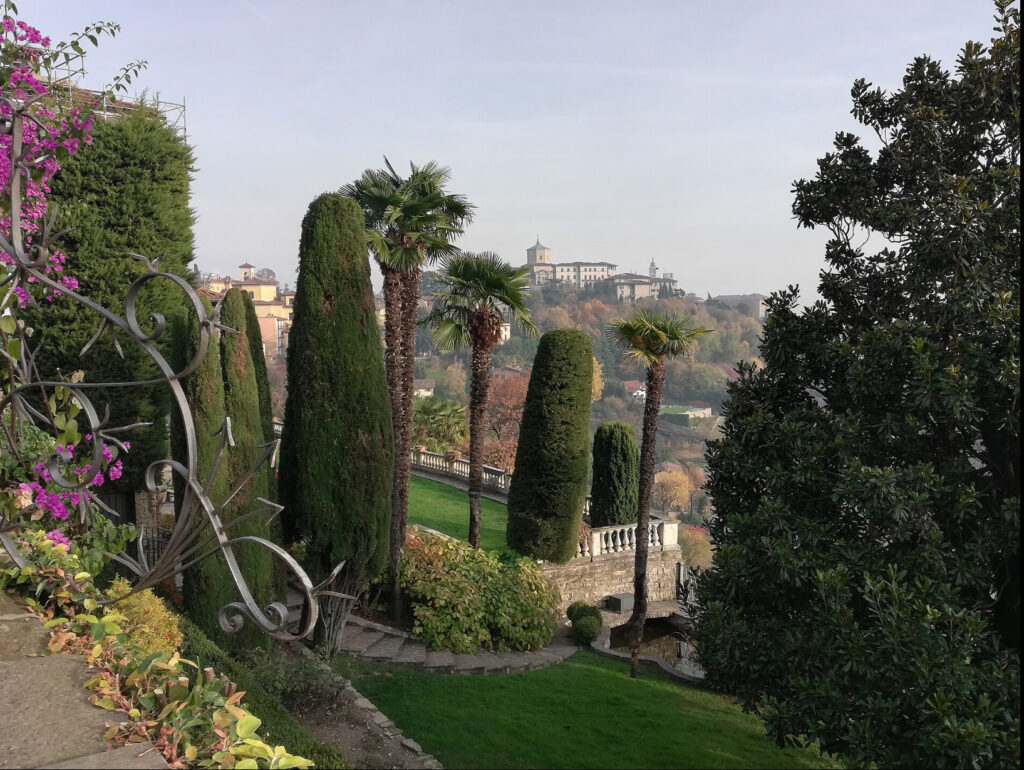

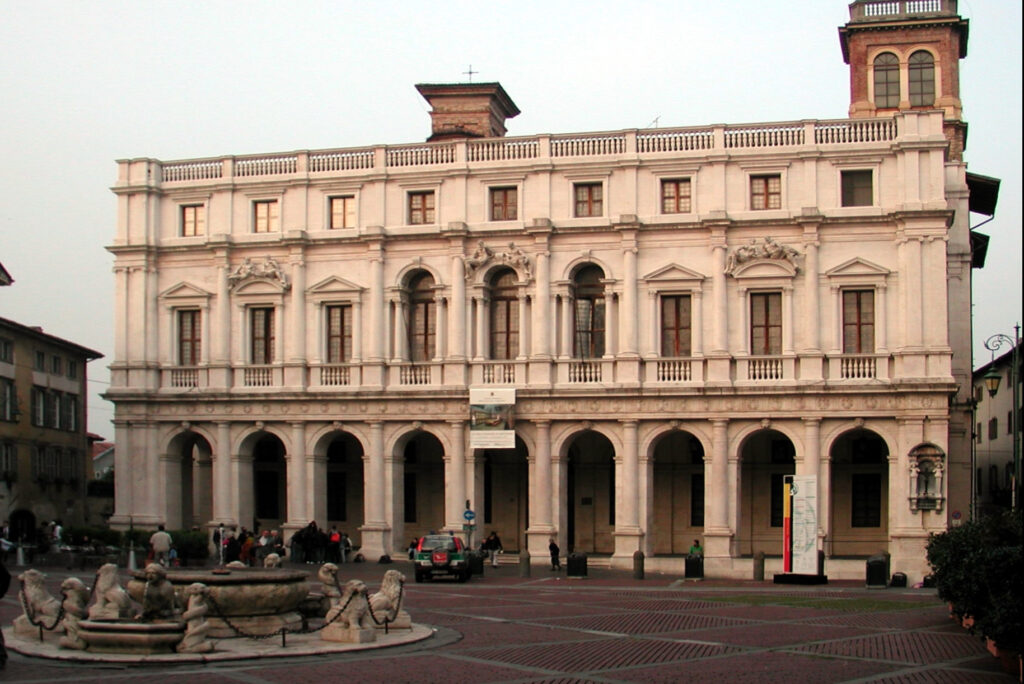

Here’s a one-day itinerary for exploring Bergamo that blends its rich history with local culinary delights:
Morning: Exploring Città Alta
- Breakfast at a Café in Piazza Vecchia (8:30 AM – 9:30 AM)
- Start your day with an Italian breakfast at a café in the heart of Piazza Vecchia, such as Caffè del Tasso, which has been operating since 1476. Enjoy a cappuccino and a sweet pastry like cornetto (Italian croissant) while soaking in the vibrant atmosphere of this historic square.
- Piazza Vecchia and Torre del Campanone (9:30 AM – 10:30 AM)
- After breakfast, explore Piazza Vecchia, surrounded by stunning Renaissance buildings. Climb the Torre del Campanone for panoramic views of Bergamo and its surroundings.
- Basilica di Santa Maria Maggiore and Cappella Colleoni (10:30 AM – 11:30 AM)
- Visit the magnificent Basilica di Santa Maria Maggiore, known for its Baroque interiors and ornate ceiling. Then, stop by the adjacent Cappella Colleoni, a Renaissance masterpiece with a striking facade.
- Walk Along the Venetian Walls (11:30 AM – 12:30 PM)
- Take a scenic walk along the Venetian Walls, a UNESCO World Heritage site, which offers breathtaking views over Città Bassa and the Lombard countryside.
Lunch: Traditional Bergamasque Cuisine (12:30 PM – 2:00 PM)
- Head to Il Circolino or Ristorante La Colombina, both located in Città Alta, to enjoy some of Bergamo’s signature dishes. Try:
- Casoncelli alla Bergamasca: A local stuffed pasta with a filling of meat, breadcrumbs, and Parmesan, often served with butter, sage, and pancetta.
- Polenta Taragna: A Bergamasque staple made from cornmeal and buckwheat flour, often served with cheese and meat.
Afternoon: More of Città Alta and Città Bassa
- Rocca di Bergamo and Museo Storico (2:00 PM – 3:00 PM)
- After lunch, visit Rocca di Bergamo, a medieval fortress offering panoramic views of the city. It also houses the Museo Storico, where you can learn about Bergamo’s history.
- Accademia Carrara (3:00 PM – 4:30 PM)
- Take the funicular or walk down to Città Bassa to visit the Accademia Carrara, one of Italy’s most important art galleries. The museum boasts works by Botticelli, Raphael, and Titian, along with many others from the Renaissance and Baroque periods.
Late Afternoon Café Break (4:30 PM – 5:30 PM)
- Enjoy a café break at Pasticceria Cavour in Città Bassa, known for its excellent pastries. Try a slice of Torta Donizetti, a local cake named after the composer Gaetano Donizetti, made with apricots and pineapple.
Evening: San Vigilio Castle and Dinner (5:30 PM – 8:00 PM)
- San Vigilio Castle and Sunset Views (5:30 PM – 6:30 PM)
- Take the funicular up to San Vigilio Castle for a relaxing evening stroll. The hilltop location offers sweeping views of Bergamo and the surrounding valleys, making it a perfect spot to watch the sunset.
- Dinner at a Local Restaurant (6:30 PM – 8:00 PM)
- For dinner, dine at Trattoria Sant’Ambroeus or Ristorante Da Mimmo in Città Alta, where you can enjoy more local specialties like:
- Stracotto d’Asino: A slow-cooked donkey stew, a traditional dish in Bergamo.
- Formaggi di Bergamo: Try local cheeses like Taleggio or Gorgonzola.
End of the Day (8:00 PM – Onward)
- Conclude your day with a relaxing walk through Città Alta before heading back to your accommodation. If you’re up for it, grab a nightcap at one of the cozy wine bars in the area.
This itinerary balances exploring Bergamo’s historical sites with experiencing its local food culture, offering a memorable one-day visit.
